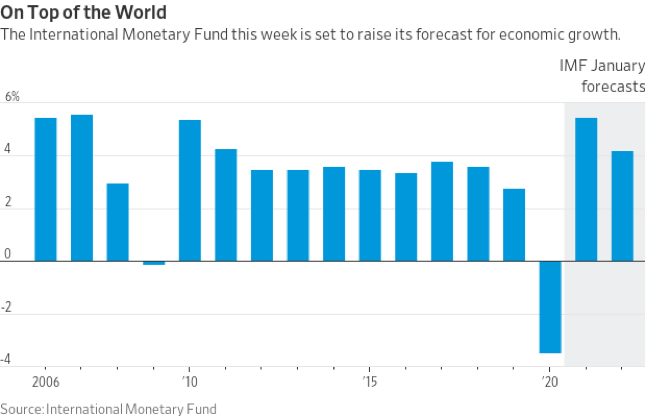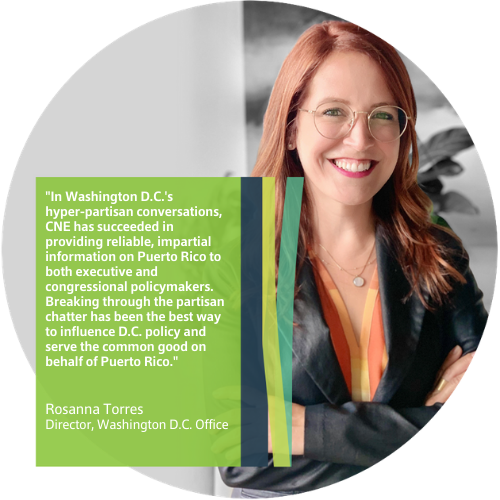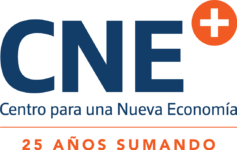
Published on April 8, 2021 / Leer en español
In This Issue
CNE’s Weekly Review has a new format but maintains all of the sections you have read in our past editions. You will now find the Note from the Editor below and Insights and Analysis from CNE first. As usual, you will also find our reading recommendations On Our Radar.
In this issue, we share a recently published summary, authored by CNE’s Research Director, Deepak Lamba-Nieves, of how municipalities in Puerto Rico organized an effective contact tracing program in the midst of the COVID-19 pandemic following the pioneer program established in the municipality of Villalba. The piece, originally published in the “Covid-19 and the Social Sciences” series sponsored by the Social Science Research Council, highlights that the often-maligned municipal governments in Puerto Rico could be “‘pockets of effectiveness’ that exist in a colonial context and within a battered and ‘right-sized’ public sector.”
Given the recent public discussion on the transformation of the Puerto Rico Electric Power Authority (“PREPA”), we have included in this issue a video where CNE’s Policy Director and expert in Puerto Rico’s energy sector, Sergio M. Marxuach, explains how PREPA’s four current processes are interrelated and how they may affect the cost and quality of service for the foreseeable future.
In the following weeks, we’ll shine a spotlight on our team members so you can take a look “inside the tank”. This week we highlight the Director of our Washington, D.C. Office, Rosanna Torres.
This week, our Data Snapshot examines the recovery rate of the international economy and the potential threat to its growth.
Insights + Analysis from CNE

Tracing the Virus and Uncovering Innovation in Puerto Rico
By Deepak Lamba-Nieves, Ph.D. – Research Director
CNE’s Research Director, Deepak Lamba-Nieves, in collaboration with Raúl Santiago- Bartolomei, Research Associate, and colleagues from CienciaPR, developed an exploratory case study to better understand the factors that led the mountain town of Villalba to devise the first contact tracing program in Puerto Rico. The research has yielded numerous hypotheses regarding municipal innovation and capacity building in crisis contexts. This small-scale success story also reveals an important lesson for Puerto Rico: key solutions to seemingly intractable problems can come from within our own shores, especially from places that we tend to overlook.
Video in Spanish
How will PREPA’s transformation affect us?
By Sergio M. Marxuach – Policy Director
In light of the ongoing discussion regarding the contract between the Puerto Rico Electric Power Authority (“PREPA”) and LUMA, we prepared a short video explainer to provide context on the four processes related to the transformation of the PREPA and where the contact with LUMA fits in.
Take a look at the video above for an overview of how these processes are interrelated and how they will, directly and indirectly, affect the cost of electricity that we pay every month.
Click here to read CNE’s analysis of the contract between PREPA and LUMA.
Data Snapshot
Is the World Economy on the Mend?

Source: Wall Street Journal
According to the International Monetary Fund, “the international economy is recovering faster than many economists projected just weeks ago, powered by growth in the U.S. and China and by the accelerating pace of vaccinations in many rich countries. Yet a new wave of lockdowns—from Europe to Canada—is threatening that growth, as many low- and middle-income nations with limited resources lag behind.”
Team Spotlight
CNE’s work is driven by extraordinary individuals who help Puerto Rico design a path for sustainable economic growth. We want you to meet the people that are part of the CNE Team. In this section, we provide a glimpse of what motivates and fires our work every day.

On Our Radar...
![]() Belt and Road Initiative – “The Belt and Road Initiative (BRI), Chinese President Xi Jinping’s signature foreign policy undertaking and the world’s largest infrastructure program, poses a significant challenge to U.S. economic, political, climate change, security, and global health interests. Since BRI’s launch in 2013, Chinese banks and companies have financed and built everything from power plants, railways, highways, and ports to telecommunications infrastructure, fiber-optic cables, and smart cities around the world. If implemented sustainably and responsibly, BRI has the potential to meet long-standing developing country needs and spur global economic growth. To date, however, the risks for both the United States and recipient countries raised by BRI’s implementation considerably outweigh its benefits.” Read about the BRI’s implications for the United States in this report from the Council on Foreign Relations.
Belt and Road Initiative – “The Belt and Road Initiative (BRI), Chinese President Xi Jinping’s signature foreign policy undertaking and the world’s largest infrastructure program, poses a significant challenge to U.S. economic, political, climate change, security, and global health interests. Since BRI’s launch in 2013, Chinese banks and companies have financed and built everything from power plants, railways, highways, and ports to telecommunications infrastructure, fiber-optic cables, and smart cities around the world. If implemented sustainably and responsibly, BRI has the potential to meet long-standing developing country needs and spur global economic growth. To date, however, the risks for both the United States and recipient countries raised by BRI’s implementation considerably outweigh its benefits.” Read about the BRI’s implications for the United States in this report from the Council on Foreign Relations.
![]() Corporate Taxes – A new report by the Institute on Taxation and Economic Policy found that “At least 55 of the largest corporations in America paid no federal corporate income taxes in their most recent fiscal year despite enjoying substantial pretax profits in the United States. This continues a decades-long trend of corporate tax avoidance by the biggest U.S. corporations, and it appears to be the product of long-standing tax breaks preserved or expanded by the 2017 tax law as well as the CARES Act tax breaks enacted in the spring of 2020.”
Corporate Taxes – A new report by the Institute on Taxation and Economic Policy found that “At least 55 of the largest corporations in America paid no federal corporate income taxes in their most recent fiscal year despite enjoying substantial pretax profits in the United States. This continues a decades-long trend of corporate tax avoidance by the biggest U.S. corporations, and it appears to be the product of long-standing tax breaks preserved or expanded by the 2017 tax law as well as the CARES Act tax breaks enacted in the spring of 2020.”
![]() Infrastructure Spending – Scholars from the Brookings Institution found that “A large-scale federal infrastructure investment program that is deliberately designed for maximum workforce impact can help accelerate reemployment, prevent scarring, and boost long-term inclusive and sustainable growth. To maximize employment and opportunity for workers, policymakers should consider not only how many jobs these investments could create, but also how good the jobs are likely to be, who they will likely employ, and to what extent targeted reskilling might be needed to fill staffing gaps.”
Infrastructure Spending – Scholars from the Brookings Institution found that “A large-scale federal infrastructure investment program that is deliberately designed for maximum workforce impact can help accelerate reemployment, prevent scarring, and boost long-term inclusive and sustainable growth. To maximize employment and opportunity for workers, policymakers should consider not only how many jobs these investments could create, but also how good the jobs are likely to be, who they will likely employ, and to what extent targeted reskilling might be needed to fill staffing gaps.”
Note from the Editor
As we return from a short Easter holiday, we find some reasons to be optimistic about the economy. Both the OECD and the IMF have released global economic forecasts pointing to a faster recovery than what was expected even a few weeks ago. In the United States, growth is expected to be at or near 4% for the four quarters ending in December 2021. Unemployment is receding and last month the American economy created over 900,000 jobs.
Yet, there are other reasons to temper this optimism, as severe challenges and risks remain. On top of the list, is the uneven rollout of vaccines. While wealthy countries have made significant progress vaccinating their populations, many emerging and developing economies are falling behind. This lag is not only morally problematic, but also dangerous. The existence of large unvaccinated populations provides the SARS-CoV-2 virus with the opportunity to keep evolving and mutating into new potent strains that could be immune to the current vaccines, easier to transmit, or more lethal. In this sense, the pandemic isn’t really over until it is over everywhere.
Second, the U.S. is leading the world recovery with a massive fiscal and monetary stimulus, which Martin Wolf, from the Financial Times, calls “a bold experiment.” If the recently announced American Jobs Plan is enacted, total economic stimulus in the U.S. will add up to about a quarter of GDP. The magnitude of this spending has led some observers to caution about the potential for runaway inflation, a risk we perceive as real but overstated at this point in time. In our view, the more troublesome risk lies in that eventually all this stimulus will have to be rolled back. Right now, it is not clear what the impact of that rollback would be on asset prices, interest rates, the strength of the dollar, current account balances, corporate balance sheets, employment, and household income. To Janet Yellen and Jay Powell, then, our future we trust.
Third, the impact of the pandemic has been highly uneven, both among and between countries and within countries. While the global economy is expected to grow significantly on average this year, that growth is forecast to be highly uneven. Large economies, such as India, Indonesia, and Mexico, for example, are actually expected to shrink by six percent or more during 2021. This would have an adverse effect on global poverty, with the World Bank estimating that the number of people living in extreme poverty will increase by about 125 million.
Within countries, different social groups have been affected differently by the pandemic. By and large, the poor, women, ethnic minorities, and those who cannot work from home have borne most of the economic, health, and social costs. The wealthy and most highly-skilled professionals have been largely spared. Many observers have pointed out that these inequalities preceded the pandemic and the current crisis has just made them visible. Yet, while that conclusion may be accurate, it is also true that calls for addressing long-standing social inequalities will acquire a renewed sense of urgency, as politicians and elected officials are summoned to deal with the fallout from the pandemic. The same is true internationally, especially in those countries where extreme poverty has risen. Political turbulence, therefore, cannot be ruled out if government officials and institutions are perceived to be unresponsive to these claims.
In sum, while we have made significant advances against the virus and the economy is in slightly better shape than we expected a year ago, we still have a lot to do. Especially, if we are, in the words of writer Jennifer Finney Boylan, to keep “our reckless, inexplicable hope for this banged-up world, a place so beautiful and so sad.
